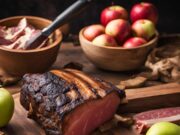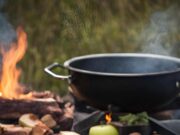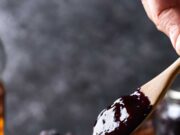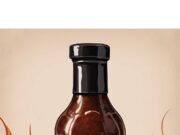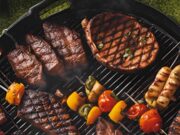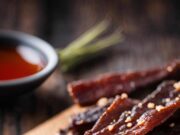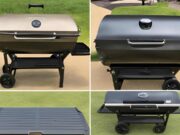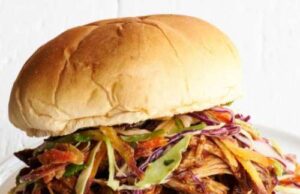- Key Takeaways:
- Understanding Brisket: Choosing the Right Cut
- Preparing the Brisket: Trimming and Seasoning
- Smoking Process: Step-by-Step Instructions
- Wrapping Techniques: When and How to Wrap Your Brisket
- Timing Matters: How Long to Smoke a Brisket
- The Importance of Resting: Allowing Your Brisket to Rest
- Common Mistakes to Avoid When Smoking Brisket
- Variations and Creative Twists on Classic Brisket Recipes
- Final Tips for the Perfect Smoked Brisket
- Frequently Asked Questions
Smoking brisket is a culinary art that requires a blend of technique, patience, and a passion for flavor.
This guide provides comprehensive information, covering everything from selecting the perfect cut to mastering the smoking process. Whether you are a novice eager to learn or a seasoned pitmaster seeking to refine your skills, this outline addresses essential topics such as trimming and seasoning, wood choices, temperature control, and common pitfalls to avoid.
Prepare to impress your friends and family with mouthwatering brisket that is sure to be the highlight of your next barbecue.
Key Takeaways:
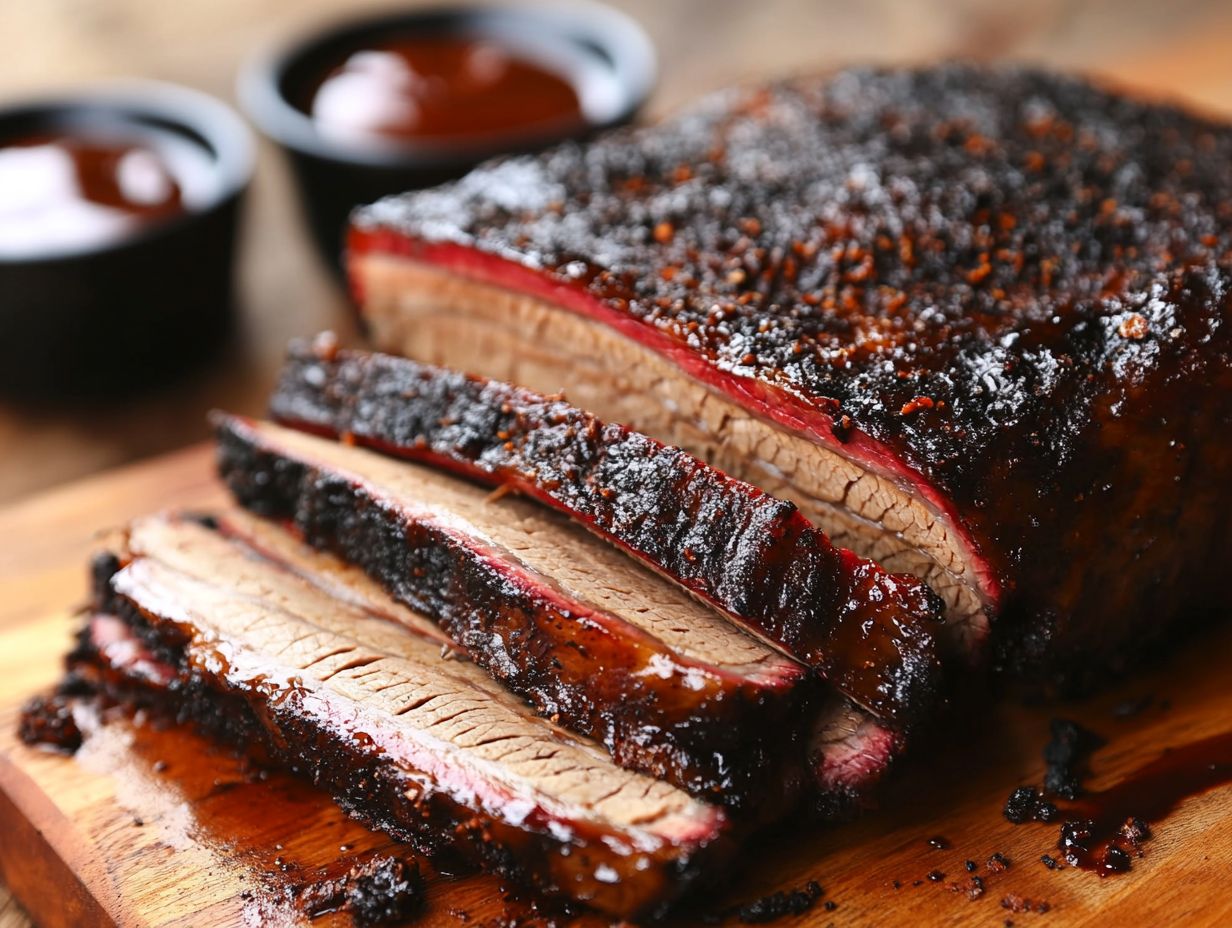
- Choose the right cut of brisket to ensure a flavorful and tender end result.
- Proper preparation, including trimming and seasoning, is key to achieving the perfect smoked brisket.
- Temperature control and wrapping techniques play crucial roles in the smoking process, so pay close attention to both.
Understanding Brisket: Choosing the Right Cut
Choosing the right cut of brisket is essential for achieving optimal results when smoking. This flavorful beef cut, sourced from the chest of the cow, possesses unique characteristics that influence cooking methods and the final taste.
The brisket is typically divided into two primary sections: the flat cut and the point cut, each offering distinct advantages for your smoking purposes. The flat cut, known for its uniform shape and leaner profile, is ideal for those who prefer a sliceable texture with less fat, making it perfect for classic sandwiches. In contrast, the point cut features more marbling, resulting in a richer, juicier flavor that many enthusiasts appreciate for its tenderness and moisture retention during extended smoking sessions.
When selecting a quality brisket from your butcher, it is important to look for a good amount of marbling throughout the meat, as this enhances flavor and helps to keep the brisket moist during cooking. Understanding these cuts and their respective characteristics can significantly elevate your smoking skills.
Preparing the Brisket: Trimming and Seasoning
Preparing your brisket correctly by trimming and seasoning is essential for enhancing the overall flavor and texture of the final smoked product. It is vital to understand the significance of the fat cap and how to apply seasoning effectively.
To begin, carefully assess the brisket’s fat content, paying particular attention to the thicker sections that can result in a greasy bite if left untrimmed. Using a sharp knife, remove any excess fat while ensuring the preservation of the fat cap, which helps to retain moisture and flavor during the smoking process.
Once the trimming is complete, proceed to the seasoning stage. Apply a generous coating of Lane’s Brisket Rub to ensure every inch of the meat is covered, allowing the spices to penetrate deeply. For those seeking an extra kick, consider adding a sprinkle of garlic powder or coarse black pepper to elevate the taste further.
This method not only maximizes the flavor profile but also contributes to a beautiful bark, setting the stage for an exceptional culinary experience.
Smoking Process: Step-by-Step Instructions
The smoking process necessitates a meticulous approach to ensure that your brisket is cooked to perfection. This involves following detailed steps, from setting up your smoker to achieving the desired BBQ aroma while maintaining the appropriate internal temperature throughout the cooking duration.
How to Set Up Your Smoker
Setting up your smoker correctly is a crucial step in the smoking process. Whether you are using a traditional smoker or a modern Traeger equipped with wood pellets, understanding your equipment is vital for achieving the perfect smoked brisket.
Different types of smokers offer a range of experiences and results. For instance, electric smokers provide convenience and precise temperature control, making them ideal for beginners. In contrast, charcoal smokers deliver a traditional smoky flavor but require more hands-on maintenance, including managing the charcoal and airflow for optimal heat.
Pellet smokers, such as those from Traeger, simplify the process with automatic feeding mechanisms that maintain consistent temperatures, which many enthusiasts appreciate. Regardless of the type you choose, it is essential to ensure that your smoker is clean, well-seasoned, and properly calibrated before cooking, as this will enhance both flavor and performance.
Best Wood Choices for Smoking Brisket

Selecting the right wood chips is essential for imparting distinct flavors to your brisket. Cherry wood and apple wood are popular choices for creating a rich BBQ aroma while enhancing the meat’s natural taste.
Other varieties, such as hickory and mesquite, offer unique and robust profiles that contribute deeper smokiness, beautifully complementing the savory richness of the brisket. If you prefer a milder flavor, oak wood provides a balanced smoke that does not overpower the brisket, allowing the meat’s natural juices to shine through.
It is also important to consider the quality of the wood chips. The best results come from using well-seasoned and untreated varieties, ensuring that the smoke infuses flavor and enhances the overall smoking experience.
Temperature Control: Monitoring and Maintaining Heat
Maintaining the correct internal temperature throughout the smoking process is essential for transforming your brisket into a tender and flavorful dish. It is necessary to use a reliable meat thermometer to monitor cooking time accurately.
The ideal internal temperature for brisket typically ranges from 190°F to 205°F, which is where the collagen breaks down, resulting in the desired tenderness. Utilizing a meat thermometer allows you to achieve this precision; it is best to insert the probe into the thickest part of the brisket to ensure accurate readings.
Cooking times will vary significantly based on the thickness and weight of the cut; generally, you can expect approximately 1 to 1.5 hours of smoking time per pound at around 225°F to 250°F. This attention to detail not only elevates the quality of the brisket but also ensures that every bite is infused with rich flavors.
Wrapping Techniques: When and How to Wrap Your Brisket
Utilizing the appropriate wrapping techniques during the smoking process can significantly enhance the tenderness and flavor of your brisket. Methods such as the Texas Crutch, which involves using aluminum foil or butcher paper, can help retain moisture and expedite cooking.
Understanding the different wrapping methods and knowing when to apply them can truly elevate your final results. The Texas Crutch, in particular, is a widely embraced technique among pitmasters. This method involves wrapping the brisket once it reaches a critical temperature, typically around 160°F, to lock in juices and further tenderize the meat.
Each wrapping material has its advantages. For example, aluminum foil creates a tight seal that effectively traps moisture but may result in a softer bark due to steam. Conversely, butcher paper is more breathable, helping to maintain that desirable crust. Evaluating the pros and cons of these materials will aid you in making strategic decisions throughout your cooking process, ultimately enhancing both flavor and texture.
Timing Matters: How Long to Smoke a Brisket
Understanding how long to smoke a brisket is essential for achieving the perfect balance of flavor and tenderness. Timing can vary based on factors such as the size of the brisket and the specific smoker you are using.
When calculating the ideal cooking time, consider both the weight and thickness of the meat, as these dimensions significantly influence the duration needed for thorough smoking. A general guideline is to allocate approximately 1 to 1.5 hours per pound at a consistent temperature of around 225°F.
Additionally, variations in smoking methods, such as using an offset smoker or a vertical charcoal smoker, can lead to differences in heat distribution, which may further affect cooking times.
It is crucial to practice patience during the smoking process. Regularly monitor the internal temperatures to ensure optimal doneness and moisture retention.
The Importance of Resting: Allowing Your Brisket to Rest
Resting your brisket after smoking is a crucial step that allows the juices to redistribute, significantly enhancing the overall tenderness and flavor, which makes slicing the brisket a more enjoyable experience.
A proper resting period, typically ranging from one to two hours, is essential as it provides the connective tissues time to relax and the meat to become more succulent. During this time, the internal moisture, which often migrates to the surface during cooking, redistributes throughout the brisket. This process not only boosts juiciness but also improves your ability to achieve clean, easy slices when it’s time to serve.
By understanding the importance of resting, you will elevate your final product, ensuring that each bite offers a delightful combination of flavor and tenderness that will enhance any barbecue gathering.
Slicing the Brisket: The Right Cuts for Serving
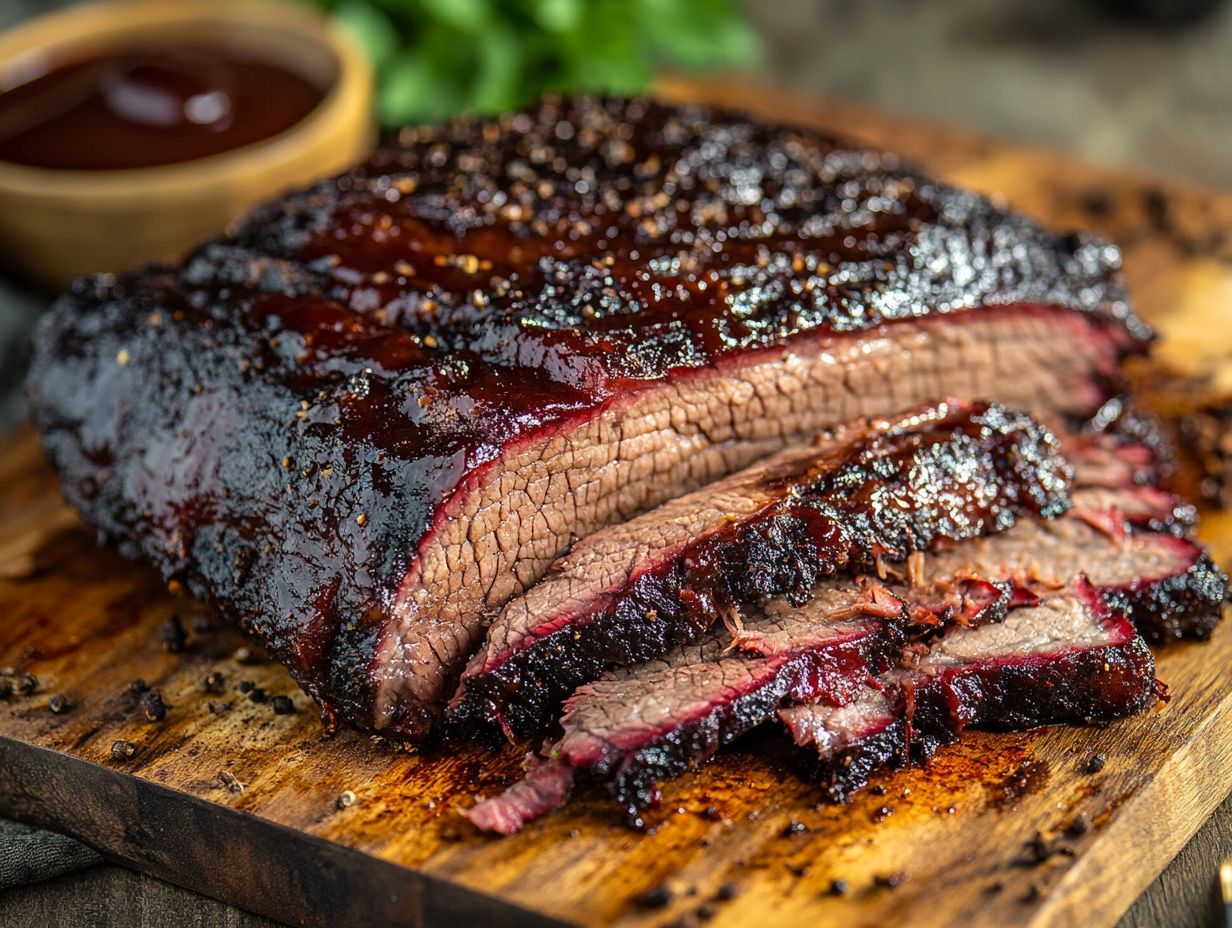
Correctly slicing brisket is essential to ensure that each piece retains its tender texture and showcases the beautiful marbling, allowing you to serve it to guests in a way that highlights the quality of your smoking efforts.
When approaching this task, it’s crucial to consider the grain of the meat; cutting against it rather than with it will yield more tender bites. Typically, a thickness of about one-quarter inch strikes the ideal balance between showcasing the marbling and maintaining moisture within each slice.
Utilizing a sharp carving knife will help you achieve clean cuts, preventing the fibers from tearing and preserving the brisket’s overall integrity.
Paying attention to these techniques not only enhances the presentation on the plate but also elevates the dining experience by ensuring that each mouthful is a perfect blend of flavor and texture.
Common Mistakes to Avoid When Smoking Brisket
Avoiding common mistakes when smoking brisket is crucial for achieving optimal results. From selecting the right cut to monitoring internal temperature, understanding these pitfalls will enhance your smoking experience.
One frequent oversight made by both beginner and experienced pitmasters is inadequate trimming of the brisket. Failing to remove excess fat can hinder flavor penetration and lead to an unappealing texture. Ensuring a uniform trim enhances the smoking process, allowing for even cooking and better bark formation.
Many also overlook the importance of maintaining consistent temperatures throughout the smoking process. Proper temperature control is essential for rendering fat and achieving that tender, juicy finish. Utilizing a reliable thermometer and familiarizing yourself with both the smoker’s temperature fluctuations and the brisket’s internal temperature can significantly improve your results.
By addressing these common challenges, you can elevate your smoking game and impress your guests.
Variations and Creative Twists on Classic Brisket Recipes
Exploring variations and creative twists on classic brisket recipes can significantly enhance your smoking repertoire, allowing you to experiment with different flavors, techniques, and accompaniments that will make each BBQ experience unique.
This adventurous journey into the world of smoked brisket opens the door to a myriad of seasoning blends, such as a sweet and spicy chili rub or a zesty herb marinade that beautifully complements the meat’s rich texture. As a grilling enthusiast, you might consider diverse cooking methods, including low-and-slow smoking, reverse searing, or even wrapping the brisket in butcher paper to achieve a flavorful bark.
In terms of side dishes, inventive pairings such as creamy coleslaw or a tangy potato salad can elevate your meal, complementing the savory nature of brisket while adding an exciting contrast of flavors and textures to the plate.
Final Tips for the Perfect Smoked Brisket
To achieve the perfect smoked brisket, consider these essential tips that focus on critical aspects such as cooking time, internal temperature, and the importance of utilizing the right tools and techniques to enhance flavor and tenderness.
Mastering this art requires your attention to detail, particularly in maintaining a consistent cooking temperature throughout the process. It is essential to continuously monitor the internal temperature of the brisket, aiming for a range of approximately 195°F to 205°F for optimal tenderness.
Seasoning plays a vital role as well; a simple blend of salt and pepper can create an impressive crust, but you should feel free to experiment with other spices to add a personal touch.
Lastly, presentation matters—allow the brisket to rest for at least an hour before slicing to retain its juices. When carving, make sure to slice against the grain to achieve beautiful, tender slices that will impress any guest.
Frequently Asked Questions
What is the best type of wood to use when smoking brisket?

The best wood for smoking brisket is a hardwood such as oak, hickory, or mesquite. These woods provide a strong, smoky flavor that pairs well with the rich taste of brisket.
How long should I smoke a brisket for?
Brisket should be smoked low and slow, at a temperature between 225-250 degrees Fahrenheit, for an average of 1-1.5 hours per pound of meat. This can vary depending on the size and thickness of the brisket, so it’s important to use a meat thermometer to check for doneness.
Do I need to marinate the brisket before smoking it?
While marinating can add flavor to the meat, it is not necessary when smoking brisket. The low and slow cooking process will infuse the meat with plenty of flavor, making a marinade optional.
Should I wrap the brisket while it’s smoking?
Wrapping the brisket, also known as the “Texas crutch,” can help to speed up the cooking process and keep the meat moist. However, some pitmasters prefer not to wrap, as it can soften the bark on the outside of the brisket. It’s ultimately a personal preference.
How do I know when the brisket is done?
The best way to determine if a brisket is done is by using a meat thermometer. The ideal internal temperature for a fully cooked brisket is 195-203 degrees Fahrenheit. Another way to check is by using the “poke test” – if a probe or fork easily slides into the meat, it is likely done.
Can I smoke a brisket in any type of smoker?
Brisket can be smoked in a variety of smokers, including charcoal, electric, or pellet smokers. The key is to maintain a consistent temperature and add wood chips or chunks for smoke flavor. Experiment with different types of smokers to find your preferred method.


